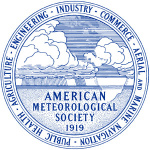- Industry: Weather
- Number of terms: 60695
- Number of blossaries: 0
- Company Profile:
The American Meteorological Society promotes the development and dissemination of information and education on the atmospheric and related oceanic and hydrologic sciences and the advancement of their professional applications. Founded in 1919, AMS has a membership of more than 14,000 professionals, ...
Nautical term for a crosswind, especially a wind blowing 90° from a ship's heading.
Industry:Weather
Method for testing toxic effects of water with the help of living organisms; specifically: 1) the use of a change in biological activity as an indicator of a sample's response to biological treatment; 2) determining toxicity of wastewaters by using viable organisms as test organisms.
Industry:Weather
Mixing occurring on sloping topography on the ocean margins or on seamounts primarily as the result of breaking internal waves. Boundary mixing is thought to play a major role in the vertical transport of heat.
Industry:Weather
Mathematical models that simulate the chemistry at a given point in space as a function of time. Advection of chemical species in and out of the box is not considered. These models are used particularly to study the evolution of homogeneous air masses and for Lagrangian airshed studies.
Industry:Weather
Mesoscale vortices observed at the ends of a line segment of convective cells, usually cyclonic on the northern end of the system and anticyclonic on the southern end, for an environment of westerly vertical wind shear (in the Northern Hemisphere). The vortices are generally strongest between 2 and 4 km above ground level, but may extend from near the surface to about 8 km above ground level. They have been observed at scales between 10 and 200 km, and often have lifetimes of several hours. In extreme cases, the larger cyclonic vortices may become balanced with the Coriolis force and last for several days.
Industry:Weather
Low, rumbling thunderlike sounds of short duration not originating from thunderstorms and believed to be of seismic origin. Different local names are used for this phenomenon in different parts of the world.
Industry:Weather
In U. S. Weather observing practice, a condition wherein the cloud cover is more than 0. 9 but less than 1. 0 (to the nearest tenth). This would appear in an aviation weather observation as an overcast sky cover, with an encoded “remark” (currently, “BINOVC”) to indicate any breaks.
Industry:Weather
In the United States, colloquial name given to a dense fog over Cape Cod, Masachusetts, especially in the vicinity of Chatham, on the “elbow” of the Cape.
Industry:Weather
In the Shetland and Orkney Islands, stormy weather occurring about Whitsuntide (seventh week after Easter).
Industry:Weather
In the Northern Hemisphere, a wind that rotates in the counterclockwise direction with increasing height. Opposite of veering wind.
Industry:Weather
